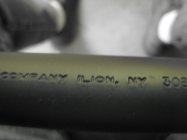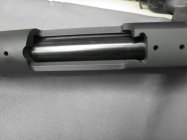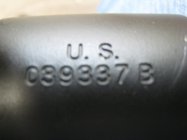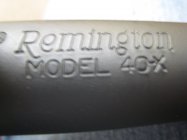SBS
Gold $$ Contributor
40X barrels were date coded also. I see some stamping just after the caliber stamps, but picture not sharp enough to read the letters. This is the date the barrel was made, usually close to date rifle was assembled. I've owned several of these stocks, both in complete rifles and just stocks that were made like this. Apparently Rem. thought of the longer accessory rail after the change over to the 700 style bolt or they simply wanted to use up what short rails they had. The rimfire stocks of the same era were identical except for 2 features. On the rimfire stocks, there is a shallow relief below about the center of the action to provide clearance for the screw head that holds the ejector in the action. Also, on the front of the comb, the bolt relief slot for the rimfire is shorter and will not let you remove a centerfire bolt unless this slot is lengthened. If this is done, it almost always obvious. So if this was originally a rimfire stock that the barreled action was put in, those would be the tell tale signs. I've put several 40X rimfires in centerfire stocks and vice versa over the years. Of course, once a centerfire action is bedded in a rimfire stock, only the bolt relief slot is an indication. I cannot tell for sure, but this appears to be a standard weight barrel, which was fairly common early on, but discontinued not too long after stainless barrels appeared and apparently demand for standard barrels declined. My last new SS standard barrel 40X was about 1975. Remington would not make a repeater with a standard barrel -- they claimed accuracy was not always up to their standards with that combination.Rems typically have a code stamped on the barrel just in front of the action and maybe below the stock line. It is the most useful in dating the rifle. Not sure if the 40X's followed this procedure.















